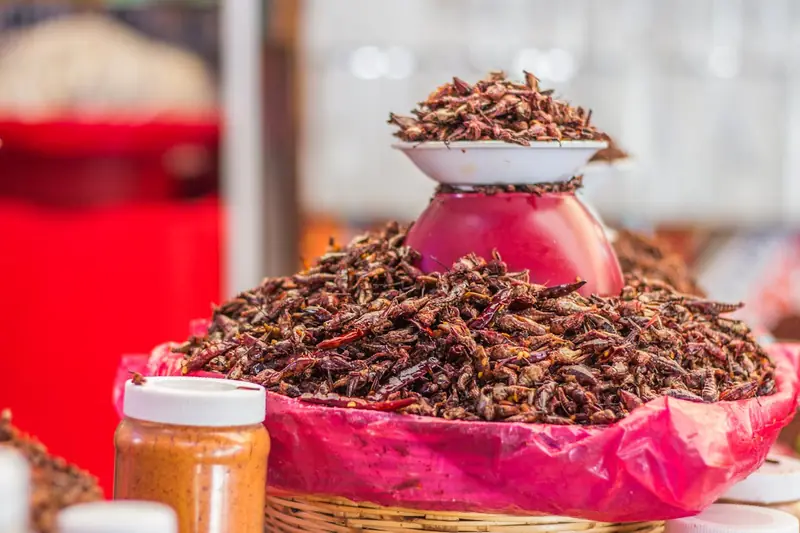
This city-state in Southeast Asia is renowned for its warm embrace of cuisines from around the globe, blending them into something uniquely its own—delicious and distinctive.
Not wanting to be left behind, Singapore has jumped on a trend that people worldwide are following, primarily because it aims to save the planet from the climate crisis.
Which Insects Will Be on Singaporeans’ Plates?
So, the Singapore Food Agency (SFA) has approved the import and consumption of 16 types of insects.
“The SFA will allow the import of insects and insect products that belong to species with low regulatory concern,” the agency stated. According to its experts, these insects and their processed products can be used for human consumption or as animal feed.
So, which insects made the list? They include crickets, locusts, grasshoppers, beetles (including rhinoceros beetles), mealworms, waxworms, silkworms, and even honeybee larvae. Some of these are represented by multiple species.
For insect-eating enthusiasts, this is indeed exciting news. “Now they have such a large list of species approved for human consumption,” said Australian entomologist and dietitian Skye Blackburn, enthusiastically speaking to The Guardian. A long-time advocate for incorporating insects into diets, Blackburn believes this culinary innovation will make Singapore even more attractive to tourists.
However, environmentalists might not be thrilled that honeybees made the list. But Blackburn reassured that it’s not about the valuable female bees, but rather the males—drones. These are typically where Varroa mites settle, posing a threat to the entire bee colony. Thus, the bee community will likely be grateful to Singaporeans for ridding them of this menace.
Importantly, the SFA document clarifies that these edible insects cannot be harvested from the wild. Their journey to the tables of food enthusiasts must be accompanied by “documentary evidence that the insects are raised in facilities controlled by a competent authority.”

Bon Appétit!
The list of imported insect-based products in Singapore includes insect oil and pasta, chocolate and other confectionery items containing no more than 20 percent insects, salted, brined, smoked, and dried bee larvae, pickled beetle larvae, and silkworm pupae.
By the way, one of the well-known seafood restaurant chains in the country has already developed 30 dishes featuring insects. Among them are sushi adorned with silkworms and crickets, salted crab eggs with superworms, and meatballs garnished with worms.
Eating insects is far from a new idea. It has been embraced in more than 100 countries worldwide, with Mexico, Thailand, and India being the biggest insect aficionados.
Many countries view the global shift toward this practice as a potential solution to the looming climate apocalypse. “Insects are an undervalued source of protein and a way to combat climate change,” concluded delegates at the World Economic Forum in 2022.

